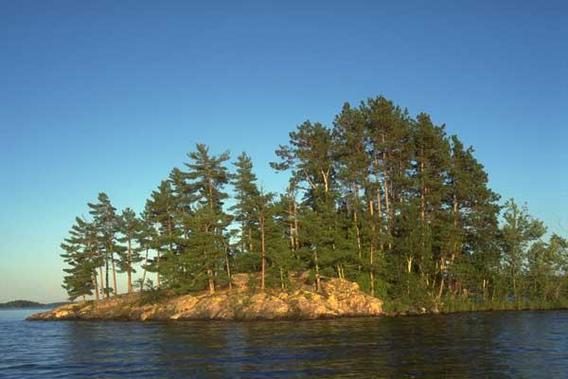
Funded by: Hubachek Wilderness Research Foundation
In northern Minnesota, the southern boreal forest is a complex mix of jack (Pinus banksiana), red (P. resinosa) and white (P. strobus) pines, quaking aspen (Populus tremuloides), paper birch (Betula papyrifera), black spruce (Picea mariana), balsam fir (Abies balsamea) and occasionally white cedar (Thuja occidentalis), growing on shallow, rocky soils. Many of these species reproduce well after fire. Some scientists predict that human-induced warming will result in northward migration of the boreal forest, with the present range becoming temperate forest, oak, and/or grassland. However, this region also faces a number of other changes-- including invasive species, changes in fire regimes and windstorm frequency and severity, fragmentation, atypically high deer densities, and others. Much of our work attempts to understand how these forests will change in the face of this collective of change agents.
This includes work on controls on range limits of hardwoods and conifers; on regeneration patterns in mixed hardwood-conifer stands as a function of neighborhood effects plus climate change; and on effects of multiple disturbance events (wind, fire, or both, at varying severities).
Publications
Kern, C.C., R.A. Montgomery, P.B. Reich, T.F. Strong. 2014. Harvest-created canopy gaps increase species and functional trait diversity of the forest ground-layer community. Forest Science 60: 335-344.
Palik, B., R. Montgomery, P.B. Reich, S. Boyden. 2014. Biomass growth response to spatial pattern of variable retention harvesting in a northern Minnesota pine ecosystem. Ecological Applications 24:2078–2088.
Fisichelli, N., L. Frelich, P.B. Reich. 2013. Climate and interrelated tree regeneration drivers in mixed temperate-boreal forests. - Landscape Ecol. 28: 149-159. DOI: 10.1007/s10980-012-9827-z
Kern, C.C., R.A. Montgomery, P.B. Reich, T.F. Strong. 2013. Canopy gap size influences niche partitioning of the ground-layer plant community in a northern temperate forest species. J Plant Ecology 6:101-112.
Kern, C.C., P.B. Reich, R.A. Montgomery, T.F. Strong. 2012. Yellow birch, northern red oak, eastern white pine, and eastern hemlock seedling growth and survival: Do deer and shrubs override canopy gap size effects? Forest Ecology and Management 267:134–143, doi:10.1016/j.foreco.2011.12.002
Reich, P.B., L.E. Frelich, R.A. Voldseth, P. Bakken, E.C. Adair. 2011. Understorey diversity in southern boreal forests is regulated by productivity and its indirect impacts on resource availability and heterogeneity. Journal of Ecology, Article first published online: 16 NOV DOI: 10.1111/j.1365-2745.2011.01922.x
Frelich, L.E, P.B. Reich. 2010. Will environmental changes reinforce the impact of global warming on the prairie-forest border of central North America? Frontiers in Ecology and the Environment 8(7):371–378.
Friedman, S.K., P.B. Reich. 2005. Regional legacies of logging: Departure from presettlement forest conditions in northern Minnesota. Ecological Applications 15:726-744.
Dovciak, M., Frelich, L.E., Reich, P.B. 2001. Discordance in spatial patterns of white pine (Pinus strobus) size-classes in a patchy near-boreal forest. Journal of Ecology 89:280-291.
Reich, P.B., P. Bakken, D. Carlson, L. Frelich, S. Friedman, D.F. Grigal. 2001. Influence of logging, fire, and forest type on biodiversity and productivity in southern boreal forests. Ecology 82(10):2731-2748.